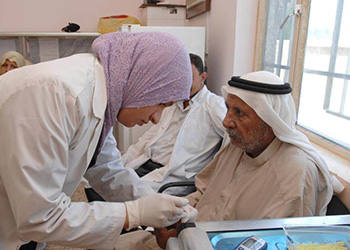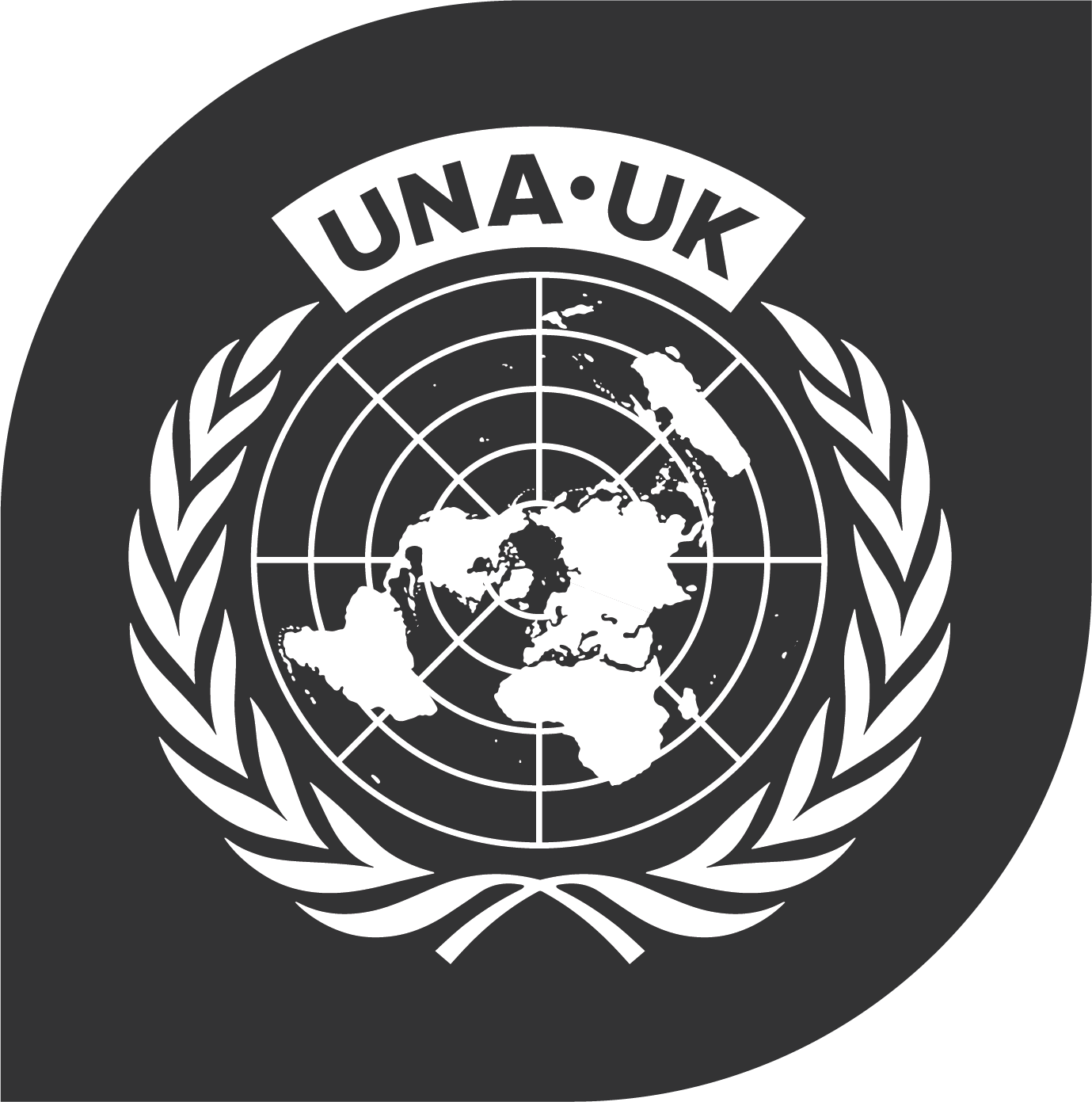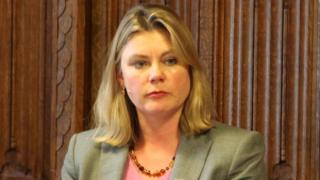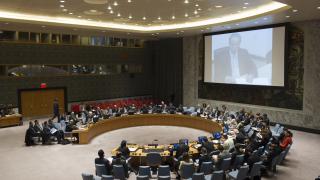
Baroness Nicholson on how to improve aid effectiveness in the post-2015 development agenda
As the process of shaping the post-2015 development agenda gathers pace, the theme of ‘aid effectiveness’ is ever more relevant.
The fact that the world felt compelled to create the Millennium Development Goals (MDGs) indicates a recognition at the highest levels of the need to quantify clear objectives in order to achieve improvements in the standards of human life.
While significant progress has been made towards achieving some of the MDGs, much well-intentioned effort continues to be wasted due to their failure to focus sufficiently on the broader long-term impact of international development aid initiatives on host communities. It is essential that the process of identifying new global development objectives takes proper account of this, or such mistakes will be repeated, reducing the effectiveness of interventions and even doing harm. We must ensure that a focus on long-term aid effectiveness is mainstreamed within post-2015 agenda objectives, or we run the risk that the setting and pursuing of individual targets will obscure or conflict with the bigger picture.
It is particularly important that we keep sight of this bigger picture when it comes to health. Healthcare is not simply about relieving immediate suffering, imperative though this is. Health is a basis for ‘human flourishing’ – a key component of stability and contentment, leading to economic, cultural and educational development, which in turn encourages greater security. Without broad-based healthcare development, there is a danger that wider stability will not achieve its true potential, leading to a vicious circle of social instability and poor health.
To minimise the danger this time around, we must resist a preoccupation with individual health targets. The world is growing more complex; only a fully integrated, systematic approach to providing public healthcare will generate the improvements required to meet the diverse health needs of populations. It must be broad enough to support wider development within public healthcare delivery and management in recipient countries, or long-term progress will be compromised.
How can we move towards this? Firstly, we must identify ‘local solutions for local problems’ – a mantra that is over-quoted and under-applied in international development. There is no ‘one size fits all’ method for the world. As cultures differ so greatly, even within national boundaries, it is vital to root each project within the fabric of the local community.
Secondly, as ownership of the problem is local, ownership of the solution must be local too. Without the full involvement of beneficiaries, healthcare will not be successful. Healthcare development must meet local aspirations in partnership with healthcare professionals. Engaging local civic leaders empowers them to discuss health challenges affecting their community, services currently provided, and the future shape of those services. These leaders become partners in health, allowing external support to flourish within existing cultural, social and political structures.
Thirdly, the term “partnership” is too often used to justify one “partner” giving instructions to the other. True partnership begins with mutual willingness to respect other positions in an atmosphere of understanding, leading to agreed compromise and progress. Part of the common commitment in successful partnerships is the recognition that they may develop into another set of imperatives, and that when they do, the gains of previous achievements may be of lasting benefit to the communities of all sides.
Finally, interventions should be fully sustainable over the long term. It is insufficient to deliver improvements if they stop the moment external intervention ceases. This is perhaps the most important reason why projects should cover a broad spectrum of public health care: outcomes are interconnected. Good health feeds into educational, economic and cultural development, which strengthens the likelihood that the host nation will be able to fund the improvements after external donors withdraw.
 Fully functioning public healthcare is the most cost-effective way to deliver a balanced system to a population, based on a tightly woven mixture of primary healthcare, education, referral, timely and accurate information flows, targeted services, proactive management and quality assurance. Through my work since 1991 as Executive Chairman of the AMAR International Charitable Foundation, I have been fortunate to see in practice how supporting such public health strategies, in partnership with host governments, UN agencies including WHO, UNFPA and UNDP, and the World Bank, can deliver dramatic and sustainable improvements. This work has a number of defining characteristics critical to ensuring its long-term effectiveness.
Fully functioning public healthcare is the most cost-effective way to deliver a balanced system to a population, based on a tightly woven mixture of primary healthcare, education, referral, timely and accurate information flows, targeted services, proactive management and quality assurance. Through my work since 1991 as Executive Chairman of the AMAR International Charitable Foundation, I have been fortunate to see in practice how supporting such public health strategies, in partnership with host governments, UN agencies including WHO, UNFPA and UNDP, and the World Bank, can deliver dramatic and sustainable improvements. This work has a number of defining characteristics critical to ensuring its long-term effectiveness.
1. Support to existing health structures
The best way to generate long-term success is to ensure that government health providers are fully and actively committed to provision of public health. Improvements to services should be achieved within the existing public healthcare structure, empowering and training people to deliver healthcare. This avoids the waste of resources that would be caused by setting up duplicate systems or processes, and allows the authority of the government to remain extant. The results are increased capacity within the system and the exposure of local healthcare professionals to international best practice.
2. Partnership with government
Strategic application and planning are crucial to delivering healthcare to any population. Involving government officials empowers them and ensures a clear understanding of the aims and outputs, and the reasoning behind proposed changes. Implementation should take place in partnership with national and local health authorities so that ideas can be shared and appropriate strategies created.
3. Community volunteers
Immediate and long-term health benefits are created by tapping into the existing social network. AMAR achieves this through training women health volunteers who take health messages into the heart of local family life. Each receives a stipend to encourage and reward participation, creating a visible link between female education and income generation, and bringing funds into local households. Outcomes include increased trust in the local primary healthcare centre and a higher uptake of both vaccinations and mother/child healthcare, facilitated by the incorporation of a mother-child health unit inside every primary healthcare centre that AMAR builds or rehabilitates.
4. Continuous professional development
Medical training must be continuous to ensure that healthcare professionals have up-to-date knowledge. As medicine in developing countries is often hospital-based, it is particularly important that healthcare professionals feel professional pride and can achieve career development while remaining in the primary healthcare system.
5. Serving remote communities
All indices of mortality and morbidity are worse in remote communities, even in developed countries, and applying urban-style public health solutions is very expensive. AMAR engages with relevant government departments and establishes medical provision to serve such communities jointly, demonstrating how the reach of healthcare can be extended cost-effectively. Solutions include satellite health posts and mobile health clinics.
6. Health education
Education offers a method of ingraining healthy behaviour into everyday life. A reduction in the rates of smoking or drug use will generate immense and long-term benefits for the health care system – especially pertinent in emerging economies where children and adolescents constitute a higher-than-average proportion of the population. AMAR delivers health education to schoolchildren at school, and to adults in the form of seminars, lectures and discussions.
7. Local workforce
In line with an overarching commitment to long-term capacity- and institution-building, AMAR teams are composed of national professionals. Professional skills are thus identified and enhanced on the ground, and brought into the heart of strategic planning and practical application of the work. This brings all aspects of the project inside the community, while adding the benefit of salaries or associated contracts to the local economy without distorting it. Similarly, sourcing of all products should be carried out locally, nationally or regionally.
8. Interconnectivity
The features listed are mutually supporting, interlinking to form a sum greater than the individual parts. Removal of one of these elements has a disproportionate effect on the other parts. Through actively promoting this synergy of action, AMAR generates improvements which are normally beyond those associated with the level of funding required to sustain continuing public health provision of similar size and scope.
The AMAR public health experience indicates that development must be integrated, systematic and focused on the people who will sustain and expand health service capacity in each country. Healthcare management and professional development must be combined with local community involvement, focusing on a broad approach to improving public healthcare capacity, not for the short term but permanently. Such an approach can only be achieved through the full involvement of local and national government and local communities.
In setting the post-2015 development agenda, we have the opportunity to redefine the relationship between the developed and developing world. It is an opportunity that should not be defined simply by the largesse of aid budgets, but rather through innovative, interconnected, holistic, relevant and thereby effective aid policies.
Photo: A nurse attends to a patient at an AMAR-supported health centre. AMAR works in partnership with multiple UN agencies including WHO, UNESCO, UNFPA and UNDP. © AMAR ICF 2013












